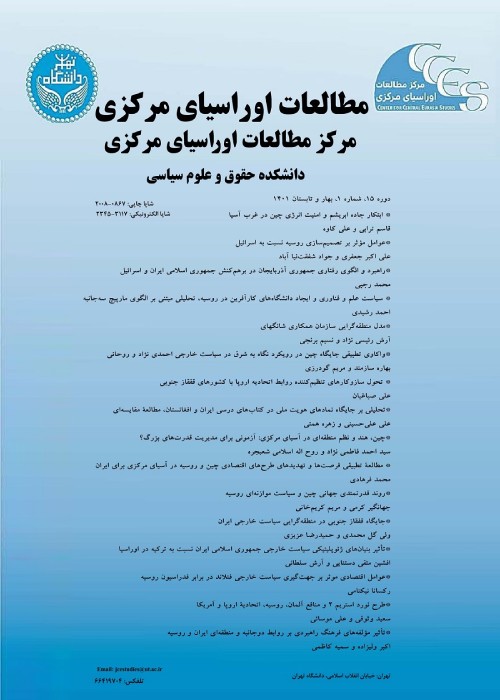Investigating the Role and Position of Parties in the RussianPolitical System
Parties act as political institutions that connect government and society. They also play a vital role in the political endurance of nations. The Russian Federation is one the countries that has an active multi-party system. The formation of parties in Russia started later than in Western Europe. The first political parties were formed under Tsar Nicholas II in the late 19th and early 20th centuries. However, until 1905, the establishment of political associations in Russia was strongly opposed until the declaration of October17, 1905. With the October Revolution of 1917, a one-party system was gradually formed in Russia, thus ending the first period of party formation.At the end of the Soviet era in the late 1980s and after the implementation of “Perestroika” and “Glasnost” by Mikhail Gorbachev, important changes took place in the Russian political system. This especially led to the re-emergence of parties. In the first years after the collapse of the Soviet Union, the emergence of political parties was very rapid and numerous. Subsequently, during the following years, the party structure of the Russian Federation experienced significant numerical and substantive changes, a subject which this article tries to investigate.
Research question:
What is the role of political parties in the political life of Russia? Do all Russian political parties have equal influence and rights since Vladimir Putin assumed power?
Research hypothesis:
The hypothesis of this atricle is that the party system in Putin's Russia is effectively a “dominant party” system; in which parties affiliated with Putin’s United Russia Party primarily dominate and control the legislative process. The authors of this article also argue that the amendment of the Russian constitution in 2020 did not change the role and position of Russian parties in practice.
In order to conduct this research and answer the key questions, a descriptive-analytical approach has been chosen. In addition, the authors have explained the problem and investigated the issue by collecting and analyzing the required data through desk research and descriptive analysis of available sources (articles, books and reliable internet sources).
The approval of the law on political parties in 2001 and the imposition of party electoral thresholds (minimum share of primary votes: 5-7 percent) drastically reduced the number of parties. But in October 2011, the government passed a bill to simplify party registration. After the approval of this law, the number of parties increased. From the 4th Duma (2003) to the 8th Duma (2021), the “United Russia” as Putin's “Party of Power” has always won an absolute majority of votes. This party has the largest number of representatives in the State Duma and in the regional parliaments.Since power in Russia is ultimately concentrated in the hands of the president, it is in the interests of political parties and party elites to get close to him in order to reduce any tensions and disagreements. Indeed, due to the dominance of the “Party of Power”, the Russian political party system is virtually non-competitive. This is the main problem of party development in today’s Russia. Therefore parliamentary parties have many resources, while non-parliamentary opposition parties have neither resources nor political stability.Considering the contemporary dominance of certain political parties in the Russian parliament and their failure to replace with newer parties, it has definitely reduced the interest and willingness of Russian citizens to vote. In this regard, in 2016, the lowest participation rate in the history of parliamentary elections of the Russian Federation was recorded with only 47.88 percent. This low turnout was in contrast to the previous four elections, in which 60 percent of all eligible voters participated and two elections, in which 55 percent participated.Several amended articles of the Russian constitution actually strengthen the role and position of the president. For example, according to clause 2 of Article 95 of the Constitution of the Russian Federation, the number of representatives of the President in the Federation Council increases from 17 to a maximum of 30. Likewise, Articles 129 and 107 increase the interference of the President in the judiciary and thus limit the independence of the country’s judiciary. On January 15, 2020, Vladimir Putin once again inexplicably reiterated the need for a strong presidential system and sufficient powers for the president in Russia.
Although according to the constitution of the Russian Federation (2020), the country has a multi-party system, but in practice, the Power Party (United Russia) plays the main role compared to other parties in Russia. The party system in Russia has become the dominant party system. Russian political parties are not an effective bridge between the people and the government due to the weakness of civil society in Russia. Therefore, until a strong civil society is formed in Russia, the country’s political parties will not play a central role as a link between civil society and the government. The “United Russia” party as the dominant political party in power, has practically become Putin's tool to hold the majority of seats in the parliament. As a result, when Putin wants to become the president of Russia, through this party and in the name of “the will of the Russian people” he can influence the establishment of laws in Parliament without opposition and in line with his political interests.
- حق عضویت دریافتی صرف حمایت از نشریات عضو و نگهداری، تکمیل و توسعه مگیران میشود.
- پرداخت حق اشتراک و دانلود مقالات اجازه بازنشر آن در سایر رسانههای چاپی و دیجیتال را به کاربر نمیدهد.



